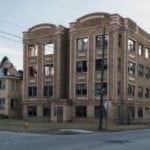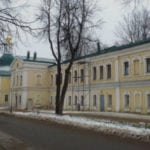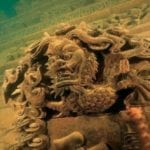 Animals
Animals  Animals
Animals  History
History 10 Most Influential Protests in Modern History
 Creepy
Creepy 10 More Representations of Death from Myth, Legend, and Folktale
 Technology
Technology 10 Scientific Breakthroughs of 2025 That’ll Change Everything
 Our World
Our World 10 Ways Icelandic Culture Makes Other Countries Look Boring
 Misconceptions
Misconceptions 10 Common Misconceptions About the Victorian Era
 Mysteries
Mysteries 10 Strange Unexplained Mysteries of 2025
 Miscellaneous
Miscellaneous 10 of History’s Most Bell-Ringing Finishing Moves
 History
History 10 Great Escapes That Ended Right Back in Captivity
 Weird Stuff
Weird Stuff 10 Fascinating Things You Might Not Know About Spiders
 Animals
Animals 10 Animals That Humiliated and Harmed Historical Leaders
 History
History 10 Most Influential Protests in Modern History
 Creepy
Creepy 10 More Representations of Death from Myth, Legend, and Folktale
Who's Behind Listverse?

Jamie Frater
Head Editor
Jamie founded Listverse due to an insatiable desire to share fascinating, obscure, and bizarre facts. He has been a guest speaker on numerous national radio and television stations and is a five time published author.
More About Us Technology
Technology 10 Scientific Breakthroughs of 2025 That’ll Change Everything
 Our World
Our World 10 Ways Icelandic Culture Makes Other Countries Look Boring
 Misconceptions
Misconceptions 10 Common Misconceptions About the Victorian Era
 Mysteries
Mysteries 10 Strange Unexplained Mysteries of 2025
 Miscellaneous
Miscellaneous 10 of History’s Most Bell-Ringing Finishing Moves
 History
History 10 Great Escapes That Ended Right Back in Captivity
 Weird Stuff
Weird Stuff 10 Fascinating Things You Might Not Know About Spiders
10 Cities And Towns With Connections To Satanism
Devil worship, the black arts, satanism—three different names for the same thing. In most instances, these words tend to fall from the mouths of blowhards who see little red demons in every crack and crevice of popular culture.
But on occasion, these terms do mean something. There are small churches and covens of practicing Satanists throughout the world, while bigger organizations like the Church of Satan and the Temple of Set occasionally get magazine coverage due to their large congregations. Some of the cities on this list are well-known hot spots of blasphemous activity, while others may surprise you.
10 Turin
Italy
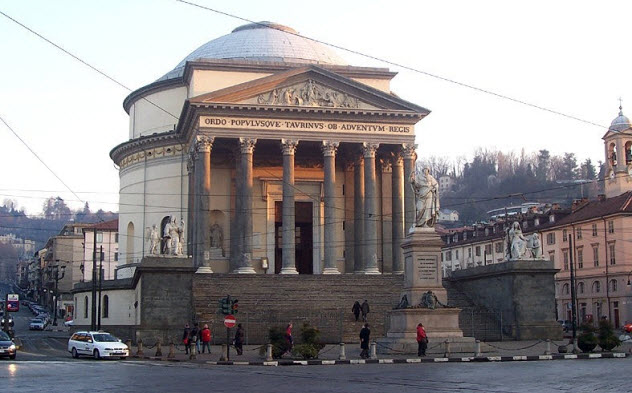
Despite being the home of the ghostly, Christlike face that adorns the Shroud of Turin, this industrial city in northern Italy is also home to one of the most thriving satanic communities in all of Europe. During the 1980s, the Catholic Church hired six new exorcists to combat the city’s “magic.”
Archbishop Anastasio Ballestrero even told The New York Times that the Devil lived in the city. A decade earlier, Italian filmmaker Dario Argento set his horror classic Deep Red in Turin because of the city’s dark reputation.
Much of Turin’s status is founded on the belief that it forms a magical triangle with the cities of London and San Francisco as a sort of powerhouse for black magic. Supposedly significant landmarks include the Piazza Statuto, the Via Vittorio Alfieri, and the Piazza del Palazzo, with each one displaying certain evil symbols like pentagrams, winged devils, and more.
Even churches are included. Certain structures, like the neoclassical Chiesa della Gran Madre di Dio, appear to be more pagan than Christian. Underneath the city, some believe that Turin’s wealthy elite hold court with demons and other Satanists to retain power over the city’s culture and economy.
Italy is one of the few places in Europe where accusations of satanism are taken seriously. During the Amanda Knox trial, attorney Giuliano Mignini argued that Meredith Kercher had been murdered as part of a satanic sex ritual. In fact, a certain segment of the Italian population still believes that the Monster of Florence was actually a cabal of rural devil worshipers.
9 Bolsover
England
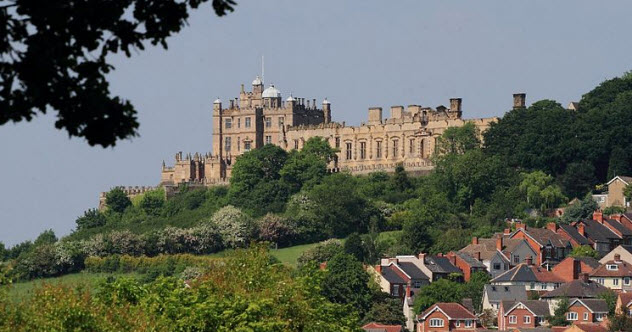
Bolsover, a former mining town located in the Midlands county of Derbyshire, boasts of many great things. They range from the usual amenities of good living—such as restaurants, pubs, and libraries—to the 17th-century Bolsover Castle, which was originally founded in the 11th century by one of William the Conqueror’s knights. Bolsover is also the most satanic city in England.
This title was earned in 2011 when 17 residents out of almost 76,000, or 0.2 percent of the population, claimed satanism as their religion on a census. Although the city of Bristol had 34 Satanists in its population in 2011, Bolsover had more Satanists per capita. So Bolsover is now known as the chief city in England’s “satanic heartland.”
Oddly enough, the Church of Satan was quick to deny that actual Satanists existed in Bolsover. Calling it a joke, the senior leaders in Anton LaVey’s religion echoed the sentiments of the Bolsover District Council, which called the census “a load of rubbish.”
The fact that so many Satanists in Bolsover went unnoticed until the 2011 census points to an elaborate joke on the part of at least some of the 17 citizens. Yet it should be noted that Dennis Skinner, Bolsover’s Labor MP, sports the rather diabolical nickname “The Beast of Bolsover” due to his red-hot temperament.
8 Amityville
New York
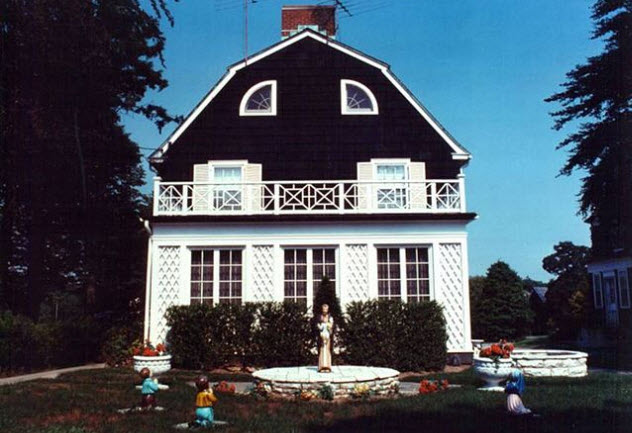
Amityville, a small town in Long Island’s Suffolk County that was made famous by Jay Anson’s 1977 book, has attracted its fair share of unwanted attention. The Dutch Colonial house with the moon-shaped eyes no longer occupies the lot at 112 Ocean Avenue, but sightseers and fans of the macabre still stop by on occasion to get a little spooked.
Although many claim that the entire story behind The Amityville Horror was fabricated, it’s not disputed that Ronald “Butch” DeFeo Jr. killed six members of his family on the night of November 13, 1974. At the trial, DeFeo claimed that “devilish black hands” and disembodied voices drove him to kill. This statement may have inspired some of the later claims made by the Lutz family.
But like DeFeo, another Long Island murderer was drawn to the house’s negative energy. Before savagely murdering his friend and fellow high school junkie Gary Lauwers on June 16, 1984, Ricky Kasso, later dubbed the “Acid King,” was a well-known Satanist in and around his hometown of Northport, Long Island. A fan of shouting “Hail Satan” to pedestrians, Kasso was the head of a drug-fueled satanic coven called the Knights of the Black Circle.
During a Walpurgis Night celebration, Kasso and a few friends supposedly performed a ritual at the vacant Amityville house. Of course, this story may not be true. But Kasso did murder Lauwers in the name of Satan, even demanding that the beaten and bloody Lauwers say that he “loved Satan.”
7 Fort Thomas
Kentucky
On a cold winter morning in February 1896, a headless corpse was found on the Fort Thomas, Kentucky, farm of John Locke. Upon closer inspection, it was revealed that the corpse belonged to a pregnant woman named Pearl Bryan.
A native of Greencastle, Indiana, Bryan soon became a newspaper sensation because of her gruesome fate and the mystery surrounding why she was in Kentucky in the first place.
Once the culprits were apprehended, the case grew creepier. Bryan’s killers, Alonzo Walling and Scott Jackson, were believed to be practicing occultists who murdered Bryan as part of a satanic ritual that took place after hours in a slaughterhouse.
The veracity of these allegations was bolstered by the fact that neither Walling nor Jackson would tell the police what they had done with Bryan’s head. If they did, both men claimed that they would be visited by the wrath of Satan.
Nowadays, the murder and the sinister motivations of Walling and Jackson live on in nearby Wilder, Kentucky. There, the spirits of all three supposedly haunt Bobby Mackey’s Music World nightclub.
6 St. James
New York
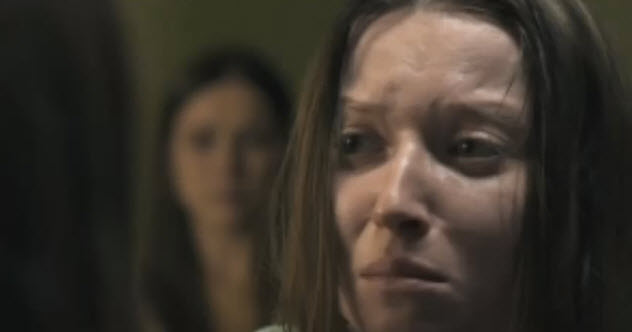
Long Island has long had an association with satanism beyond Amityville. Although the residents of North Massapequa believe that a “Devil Worship House” exists in their town, the Church of Satan has a small presence in neighboring Massapequa Park.
Even the folkloric Cropsey of Staten Island contains a satanic element. This has helped the proliferation of various legend-tripping activities throughout rural Long Island, which shares a version of the Cropsey legend.
Despite all of this sensationalism, many New Yorkers still see Long Island as a refuge—an escape from the hustle and bustle of America’s largest city. That’s what Jeannette Meyran and her daughters sought when they relocated to the small town of St. James on Long Island in 2006.
The family was also trying to leave behind tragedy. Their patriarch, Curtis Meyran, had died in an apartment fire during what the New York Fire Department has called their “Black Sunday.”
Sadly, the fresh start that the Meyrans were hoping for never came. After claiming to see hooded men on their property and hear disembodied voices and thumps throughout the house, the family discovered a diary from 1927 in their unfinished basement. The diary, written by a girl named Christina, reportedly spoke about animal sacrifices and sexual abuse as part of a Long Island–based cult.
For years afterward, the family continued to experience paranormal events, some of which included physical violence. The family’s ordeal was eventually made into an episode for Syfy’s Paranormal Witness program.
5 Victoria
British Columbia
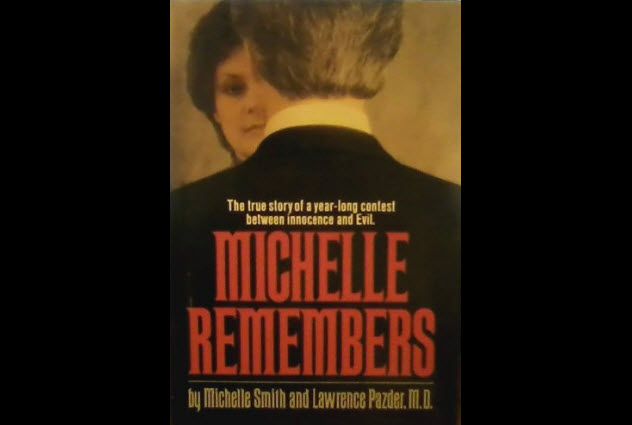
During the 1980s, Satanists were everywhere. Not only was professional wrestler Kevin Sullivan portraying one on Florida television, but other devil worshipers were popping up in movies, on television, and in music videos.
The glut of satanism in the 1980s was largely inspired by the so-called “satanic panic,” which created an entire industry dedicated to ferreting out devil worshipers, whether criminals or white-collar professionals. Of all the major accusations against Satanists, none was more damning than the assertion that they were in charge of day cares and schools.
This theory took off in 1980 with the publication of Michelle Remembers, a book cowritten by a young girl and her psychiatrist. In the book, Michelle Smith of Victoria, British Columbia, claimed that she and other children had been subjected to sexual abuse rituals at the hands of a local satanic cult.
Michelle claimed that a large portion of the town’s adult population, including her mother, were in the cult. The fact that her ordeal had occurred during the 1950s did little to calm society’s collective nerves.
Michelle Remembers became an instruction manual on how to deal with abused children and spot potential Satanists within the community. Thirty-six years later, allegations of satanic ritual abuse continue, often with the fear that pedophiles are a contributing factor.
At the heart of Michelle Remembers is the practice of recovered memory therapy, a highly controversial process that is designed to uncover “repressed memories” that are harming the patient in the present.
With questions raised about the legitimacy of recovered memory therapy, many of the abuse claims made during the satanic panic were refuted later on, thus helping the hysteria to die down by the late 1980s.
4 Toledo
Ohio
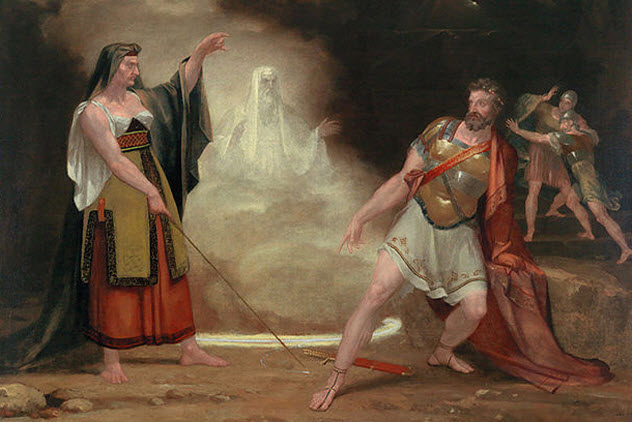
Eldritch Rites don’t immediately come to mind when you hear the words “Toledo, Ohio.” A grimy, mostly working-class city in northwestern Ohio, Toledo was the home of the satanic Our Lady of Endor Coven. Founded around 1948 by Toledo native Herbert Sloane, the cult enjoyed a long existence until his death in the 1980s.
Sloane, who performed black magic rituals in the back of his barbershop, genuinely believed in and worshiped Satan. As such, Sloane and his group were some of the first public Satanists in the US, predating Anton LaVey’s Church of Satan by almost 20 years.
Sloane’s coven believed in a Gnostic interpretation of satanism. In their view, the “Horned God” of Satan told Eve in the Garden of Eden that a supreme God held power over the Judeo-Christian God who had created the universe.
Our Lady of Endor Coven—named after the medium responsible for raising the spirit of the prophet Samuel in the First Book of Samuel—was almost entirely mystical and was committed to performing numerous occult rituals to commune more closely with the Horned God.
Such cerebral devil worship tended to keep membership low. As a result, Sloane’s group never achieved the notoriety of the Church of Satan or its many offshoots.
3 San Francisco
California
Satanism in San Francisco is synonymous with Anton LaVey’s Church of Satan. Later dubbed the “Black Pope,” LaVey was a crime scene photographer, nightclub organist, psychic, and lion tamer before becoming the face of modern devil worship. In 1968, as an example of LaVey’s authority on all things obsidian, he served as a consultant on the set of Rosemary’s Baby.
Two years earlier, LaVey and a small group of followers had founded the Church of Satan in San Francisco on Walpurgis Night. Located in the city’s Richmond District, the Church of Satan was operated out of LaVey’s private home—an all-black house located at 6118–6122 California Street.
LaVey and his followers conducted highly dramatic rituals, some of which were filmed for posterity. Thanks to such broadcast footage, as well as the publication of LaVey’s The Satanic Bible in 1969, the Church of Satan enjoyed widespread visibility throughout the late 1960s and 1970s. Many Hollywood celebrities, such as Sammy Davis Jr., became members.
San Francisco and the surrounding Bay Area have been home to several satanic or possibly satanic serial killers such as the Zodiac Killer and the Night Stalker.
2 Pergamon
Ancient Greece
The city of Pergamon no longer exists. Located near the modern Turkish city of Bergama, the ruins of the ancient Greek city of Pergamon remain vital to certain strains of evangelical Christianity. In Revelation 2:12, the city’s main temple (today known as the Pergamon Altar) is labeled as Satan’s throne.
Indeed, the entire city of Pergamon is called satanic by John of Patmos, the author of the Book of Revelation. Archaeologists and historians blame this interpretation on the first-century execution of Antipas, the Christian bishop of the city, which did not endear early Christians to the city.
Another interpretation states that Pergamon’s temple, which was a gigantic shrine to the Olympian gods during its heyday, was believed to be satanic because it embodied the morals and practices of the pagan Hellenic religion.
Since the Judeo-Christian practice of turning pagan gods and goddesses into demons was already common by the time the Book of Revelation was written, it makes sense that Pergamon’s pagan edifices were translated into satanic shrines by John of Patmos.
These days, Pergamon enjoys a second life among conspiracy theorists as the hidden influence behind everything from Hitler’s Zeppelin Field in Nuremberg to the stage at the Democratic National Convention in 2008, where Barack Obama was given the party’s nomination before winning the presidential election later that year.
1 Lalish
Iraq
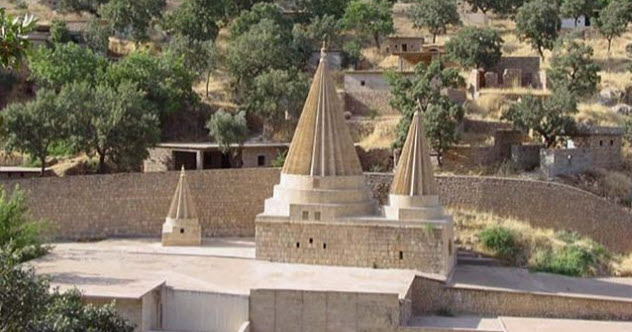
The Kurdish Yazidi community in northern Iraq has long been the target of religious persecution. The source of this hatred comes from the widely held belief that the Yazidis are devil worshipers. Recently, this idea was invoked by ISIS, who began targeting the secretive community as part of a genocide campaign that has included mass murder and mass sexual slavery.
For the most part, the Yazidi connection to Satan began with Melek Taus, the “Peacock Angel” whom the Yazidis worship as the supreme God and the creator of the universe. According to their Christian and Muslim neighbors, Melek Taus is none other than Satan—a fallen angel who has come to Earth to lead men and women astray.
Unlike many of the religions around them, the Yazidis are open about the pagan elements contained within their syncretic religion. As a result, the important shrine at Lalish, an ancient center of worship with possibly Sumerian roots, is seen as the seat of Yazidi devilry.
In 1927, the American travel writer William Seabrook helped to further perpetuate this stereotype by calling Lalish one of the seven towers of satanism run by the Yazidis in Asia. Around the same time, this belief was echoed by H.P. Lovecraft in “The Horror at Red Hook,” which calls the Yazidis “Persian devil worshipers.”
Currently, Lalish is a gathering place for the Yazidi resistance against ISIS in northern Iraq. Although old superstitions die hard, the old distaste for the Yazidi community may finally be turning a corner.
Benjamin Welton is a freelance writer based in Boston. His work has appeared in The Weekly Standard, The Atlantic, Listverse, Metal Injection, and others. He currently blogs at literarytrebuchet.blogspot.com.
